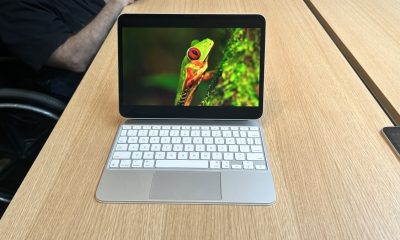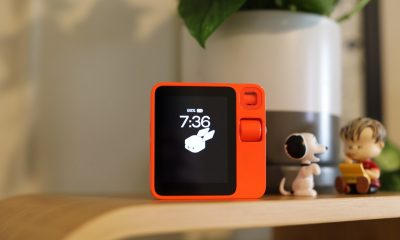Technology
This company created ‘automated following’ so two trucks only need one driver

Peloton Technology is moving autonomous vehicles along faster than most robo-taxis.
At the Automated Vehicles Symposium in Orlando this week, Peloton unveiled its highly autonomous driving system for trucks — that plural “trucks” is key. This isn’t one truck going it alone with just sensors, cameras, and software guiding it across deserted highways. It’s a platoon set-up with a lead and follow truck. The follow truck is truly driverless, and that’s where the innovation comes in.
Peloton calls this “automated following.” The system is similar to its predecessor, PlatoonPro, a Level 1 automation software and hardware system that connects the two trucks and lets the follower driver take her or his foot off the brakes and gas. But since it’s still Level 1, the driver has hands on the wheel and eyes on the road. The step shown this week is Level 4 autonomy, with a truck capable of driving on its own, sans driver, as it follows a truck with a driver at the wheel (that’s known as Level 0 or 1 autonomy).
Think of this caravan as two separate (but connected through software) vehicles, the first with a driver in control and driving, the second as an autonomous vehicle, following 55 feet behind with an empty driver seat. The lead driver controls both trucks, essentially.
Before this week’s announcement, CEO Dr. Josh Switkes spoke with me about what this means for the industry. He sees it as leveraging human drivers and vehicle-to-vehicle communication — the robots don’t take over completely, but work with the humans and the self-driving technology. He noted this autonomous arrangement can handle more circumstances and eliminates safety drivers in the second truck sooner. There’s still a driver, but only in the truck ahead. Many autonomous vehicles are limited to certain roads like highways or main thoroughfares, conditions like sunshine and dry roads, and geo-fenced areas. They often rely on a human driver to take over.

The symposium brings together the autonomous vehicle industry, and this week it put into perspective how far in the future most self-driving situations still are. It’s the side use-cases, like with trucking or shuttles, that are moving along and pushing autonomous vehicles forward. In the U.S., safety operators still sit in the front of all self-driving cars on public roads, but Peloton is changing that with its connected trucks constantly sending data to each other.
Meanwhile, autonomous car services are slowly taking off, but autonomous shuttles are driving on public roads and taking passengers, since they operate in limited, controlled environments on set routes. Just this week, a new route opened with the electric EasyMile six-seater bus operating in Salt Lake City. The shuttles will tootle around business parks, shopping centers, and university campuses for the next year to see how new transit options can work with existing and future transportation systems, like connecting people from a light-rail stop to an office building, so you don’t need to drive a personal vehicle.
This isn’t just testing viability, but putting the riding public into vehicles in low-risk environments and exposing them to autonomy — even if it’s only going 15 mph.
Safety is at the heart of this all, as Uber made clear at the symposium this week with its new industry guidelines. More than a year after a fatal crash involving an Uber self-driving car, the company is slowly inching back into testing and development. But first it wants to set strong safety standards. This isn’t just for Uber, but for all players in autonomous vehicles.

-

 Entertainment7 days ago
Entertainment7 days agoApple Watch Series 9 vs. SE: A smartwatch skeptic tested both for 13 days
-

 Business5 days ago
Business5 days agoGoogle lays off workers, Tesla cans its Supercharger team and UnitedHealthcare reveals security lapses
-

 Entertainment6 days ago
Entertainment6 days agoThe greatest films on Prime Video right now
-

 Business7 days ago
Business7 days agoGoogle dubs Epic’s demands from its antitrust win ‘unnecessary’ and ‘far beyond the scope’ of the verdict
-

 Entertainment2 days ago
Entertainment2 days agoiPad Pro 2024 now has OLED: 5 reasons this is a big deal
-

 Entertainment6 days ago
Entertainment6 days agoLoneliness in kids: Screen time may play a role
-

 Business5 days ago
Business5 days agoThe Rabbit r1 shipped half-baked, but that’s kind of the point
-

 Business6 days ago
Business6 days agoICONIQ Growth raises $5.75B seventh flagship fund





















